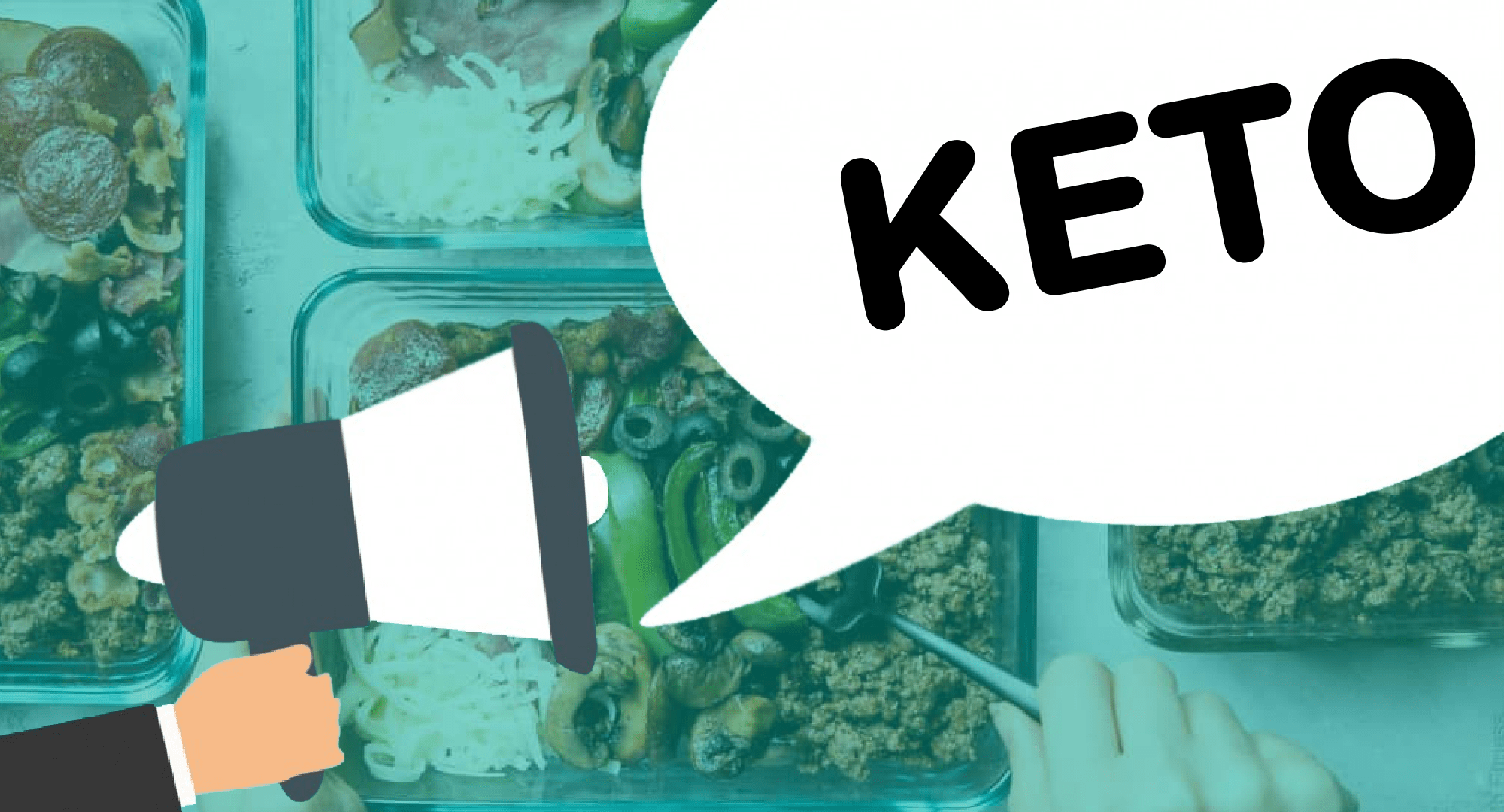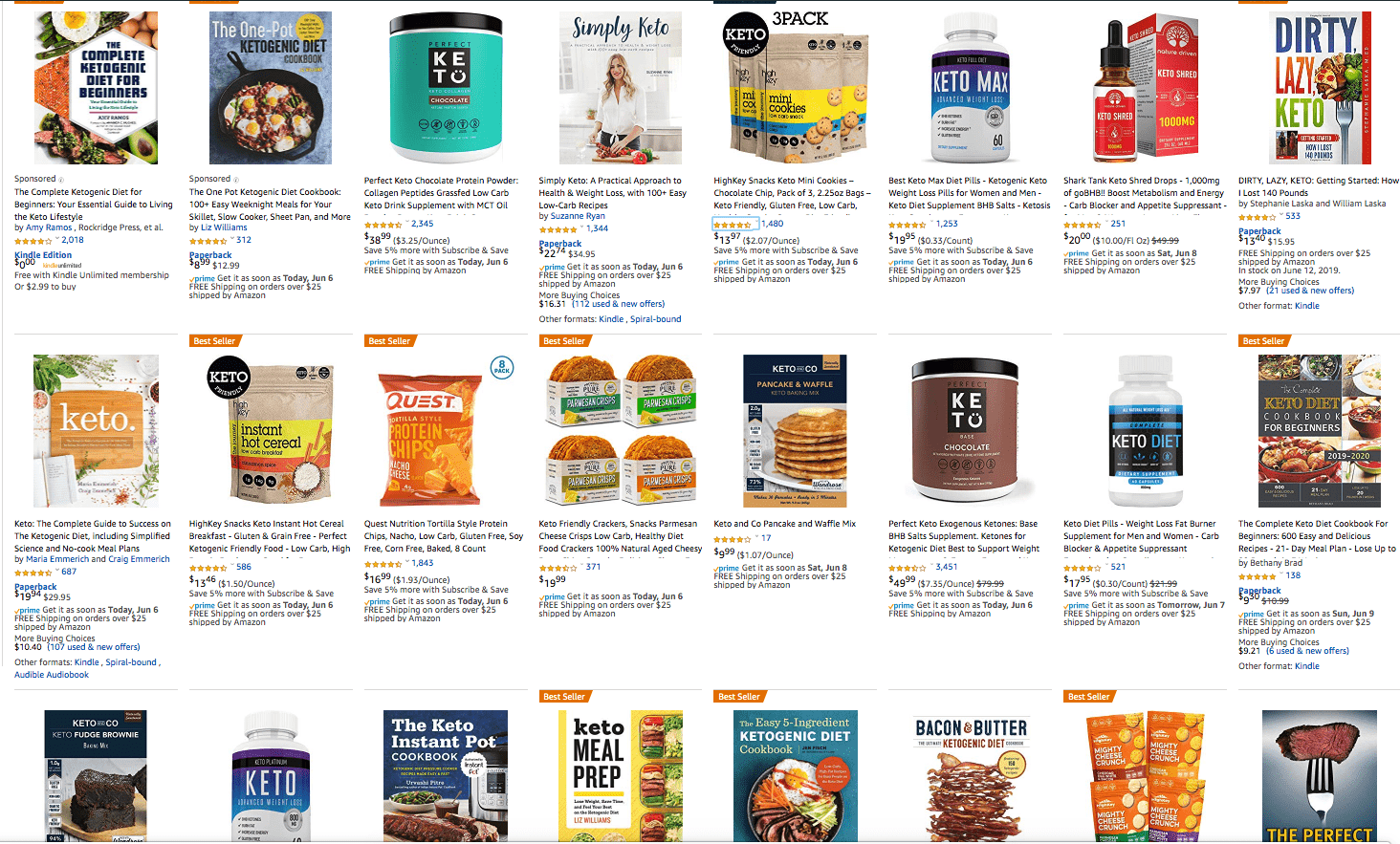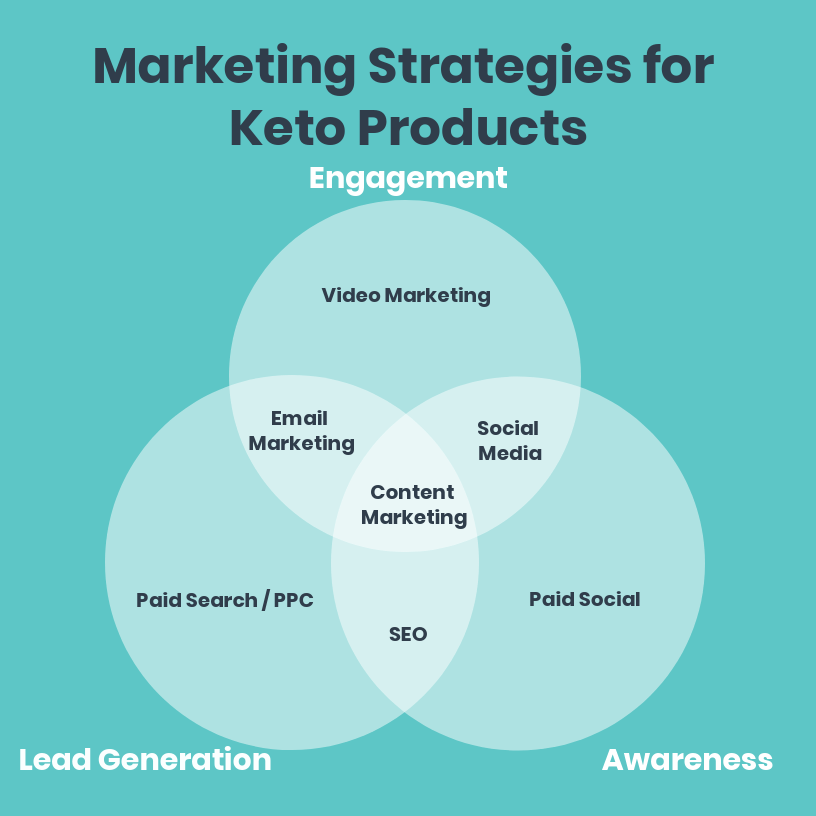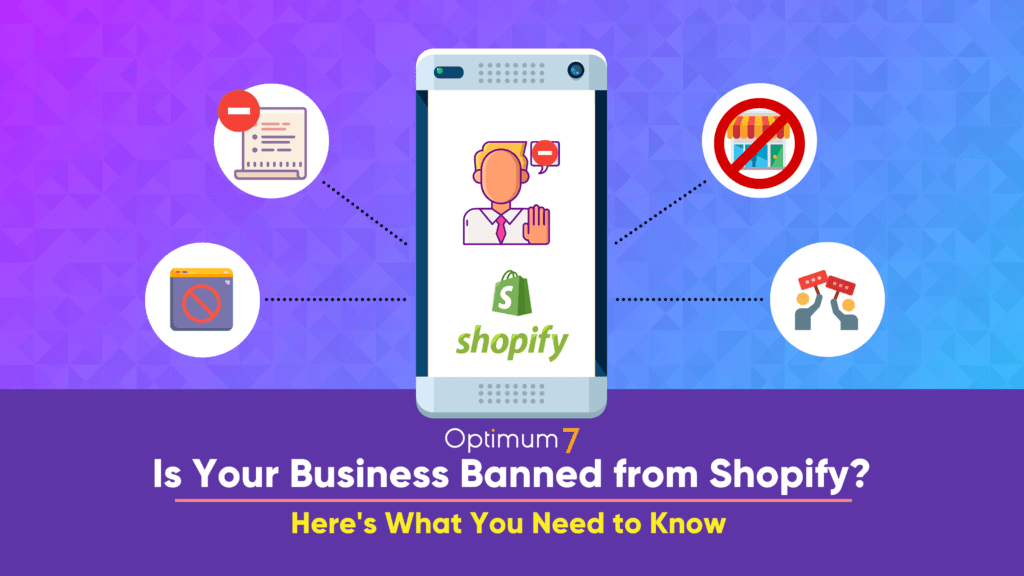Fad diets come and go, but certain ones transcend the front page of Cosmopolitan magazine and become cultural phenomena. They go viral and boost the health industry. American fad diets started in the 1970s with Weight Watchers. then in the 1980s, we had Jenny Craig, followed by the Zone Diet, Atkins, etc. The latest of these diets that have turned the fitness world upside down is the Ketogenic or Keto Diet. So in this article, you will learn how to market keto products.
The Ketogenic Diet is a high-fat, medium-protein, low-carb diet. It aims at putting your body in a state called “ketosis” in which fat is the primary fuel your body burns for energy. This biological state of ketosis has long been used to treat health conditions, such as epilepsy in children and diabetes, and has now gained worldwide popularity for its purported weight loss side effects.
The health benefits of the keto (pronounced key-toe) Diet have actually been known for decades, but it truly began gaining mainstream popularity as a weight-loss program in 2016 and exploded as the number one most searched for diet in the country, according to Google Trends.
As you can see by the above chart, in early 2018, the search term “Keto Diet”, represented by the blue line, surpassed “Weight Watchers”, represented by the purple line, as the most searched for diet in the country. The red, yellow, and green lines represent other contemporary diets: Paleo, Atkins, and Whole30 respectively.
Keto has become a household name and with it, tons of new business opportunities to sell to health-conscious individuals. Diet plans, supplements, books, keto-friendly snacks, testing meters, and other niche-products have turned the global Keto diet market into a $5 billion industry.
Market Saturation
Experts predict that the keto market will expand to $12.35 billion in 2024. Six firms currently dominate the market share, including Perfect Keto and Nestle. Even so, there is fragmentation that allows for an increasing number of businesses to enter the fray. To survive, you need to be a shark.
You are competing against hundreds of businesses, who have similar keto diet products in their lines. What’s more, they have reached the market first. You sell keto-related products because you truly believe in delivering good health. Thus, your value is making sure your consumers know you as a health brand.
Find Your Keto Niche
Just search “keto” on any Amazon, and you’ll find an array of keto-friendly products including books, foods, meters, and protein shake mixes. For a consumer to sort through these products, the saturation can overwhelm their ability to choose. That provides a problem for you because unless consumers search specifically, you’ll become part of the noise.
If you want to stand out and connect with consumers, you need to know what you are selling, and how you can stand out with keto. What can you deliver that no other competitor can? Can you offer convenience? Quality?
Reaching an oversaturated market can prove complicated. New brands try to penetrate the market by buying ads on Facebook, Google, and other viable channels. The long-lasting keto brands can deliver much more than that; they focus on content.
What does that mean for you? It means that you have to deliver more than ads or products. You must deliver the value that you believe in, and connect with your audience.
All your products, therefore, must have value. And consumers must recognize how the product can serve them. Here are some examples:
Books
People love books related to diets that can educate them; bookstores have entire sections dedicated to nutrition and health. They are a profitable niche, and you can either outsource to writers or hire them on staff.
If you are writing or publishing books, you need to make sure that each one stands out and is catered towards its target reader. Make sure that you have a distribution channel and the format to go with each one, such as digital downloads on Amazon or physical copies available for order. Determine if you will focus on passive income — accumulating money from royalties over time — or active income — releasing material regularly.
MCT Oils
Medium-chain triglycerides (MCT) are a keto-friendly oil and dietary supplements. Supporters claim that they help with weight loss. These products come from coconut oil, palm kernel oil, or dairy products. The oils stimulate more ketones during ketosis, molecules that reduce appetite cravings.
You can manufacture or distribute MCT oils to make a profit. What’s more, if you produce an oil that you can verify as pure C8 or C12 oil, then you can build trust with consumers.
Plans
Diet plans can create guides and outlines for losing weight. They help simplify keto and make sure dieters don’t go past their caloric and macronutrient allowances. Especially for keto, a guide can outline what foods do and don’t conform to the diet’s restrictions. Having a simple to use, organized diet plan means happy consumers losing weight.
Your diet plans can include…
- Grocery lists
- Macronutrient Calculators (Carbohydrates, Fats, etc.)
- Recipes
- Supplement Guides
…and more resources to simplify the keto diet and provide value to your audience.
A consumer can find free diet plans online, but you can sell them if you specialize. You can go deep and outline what products are keto friendly, and how to measure calories per day.
Results We Generate
Average Increase in Website Traffic
+135%
Average Increase in Conversion Rates
+70%
Monthly Total Leads Generated
3,500+
We become an indispensable resource for our clients to drive traffic and leads.
Recipes
As with most restrictive diets, people can tire easily of using the same recipes over and over again when they cook. Delivering recipes on a regular basis can allow people to find variety in their meals.
You can share recipes in three ways: text, video, or images and infographics. On YouTube, if you wish to show recipes, you can monetize your videos based on ads and subscribers. A blog can also display recipes, monetize based on ads, or build up a subscriber base that will eventually buy products from you. With images, you can use them to share recipes on Pinterest or Instagram. We will go into these options more below.
What’s more, recipes can be a lead magnet to your website as well as other products. If someone is just searching for a keto recipe, they can fall down your funnel and search for information on your website. People love to look up recipes for the variety or creativity.
Ketogenic Snacks and Ingredients
Prepared foods have two-fold benefits for consumers: they save time and reinforce the need to follow the diet. Not all consumers have time to cook if they have busy jobs or home lives. When exhausted, they have less incentive to prepare for their diet accordingly.
You can provide substitute imitation foods such as almond flour cookies or cooking staples such as cauliflower rice. Decide if you want to provide ingredients for cooking, or finished dry foods that store easily.
Ketone Meters
Yes, there are specific meters and tracking devices that can assist you in monitoring ketosis. They usually prick a user’s finger for blood samples or take a breath sample and measure the amount of ketone in either.
Mobile Apps
Programmers can combine metrics and technology to create apps to help people reach their workout goals. One hitch is that anyone can slap together an app. How do you stand out? What is your competitive advantage?
While smartphones cannot conduct breath or blood tests yet, they can help you track your diet. Some apps like the CRON-o-meter give you access to a private database for a fee and help you customize your ketosis journey. Others use meal images and recommendations to keep you from straying off the keto trail. Still more assist with tracking macronutrients.
If you are working on an app, the budget is a priority. When outsourcing, programmers may charge a bundle for their expertise and time. You need to know if you’re outsourcing, and how many people you want to reach. Also, determine how you’ll make a profit, either through a one-time fee or free and premium options.
Marketing Strategies for Keto Products
If you want to survive, you need more than paid ads. You need to use marketing to prove to consumers that your products have value. After all, keto products are for consumers, not for the search algorithms.
Marketing can assist with getting your products out there. We will explain what viable strategies can help.
SEO
SEO is search engine optimization or identifying keywords that rank higher in Google results. You want to know your SEO so that when people search for keto-related recipes, that they will find you first. Getting on that first page of Google results is important.
You need to prioritize SEO and organic growth for your brand. While you can incorporate PPC, and the two strategies can work in conjunction, not all budgets allow for paid ads. Google’s sponsored links especially may cost a bundle. Even when some budgets have the money, you don’t want one tool in your marketing repertoire.
In addition, you want to connect with your consumers to increase brand loyalty. The number of times they click on tracking pages may not necessarily translate into conversion rates. Especially with the number of competitors who want to own the market as well as a fraction of consumers’ time.
Perfected SEO means you rank higher when potential consumers search on Google for keto-related products. This means more people will find your items, and you can work on converting them.
Social Media Marketing for Keto Products
Social media has benefits. For one, many websites engaged in social media have tools and analytics that you can use to measure campaigns either for free or inexpensively. In addition, you can share information in real time.
You can do either paid ads and content or organic content marketing. content. While paid ads and content are a good tool to have in the box, remember that you are competing against dozens of keto product manufacturers and retailers.
Facebook is the most widely used social platform internationally. While they have the highest cost-per-click (CPC) ads and the algorithms have changed, you can still find consumers and develop organic content. The trick is to focus on people, not algorithms.
On this website, groups are full of potential clients and test audiences. Groups will spread the word of mouth for products that work or don’t work. They often are seeking products that serve similar functions.
If you know people in a group personally, you can talk to them about what they look for in a keto product, like leafy greens. They can promote you via word of mouth, and you can build a good reputation. With that said, don’t blatantly advertise to them under the guise of friendly messaging or personal posts. People will spot that. Deliver content instead — links to blogs, recipes, etc.– to get that target.
People who use Twitter post tips and links on how to abide by the keto diet. They connect based on a common interest and finding users like them. While you can do Twitter ads, it’s better for sharing snippets or links to your content to pique consumers’ interest. The word of mouth advantage exists.
You can make or break a reputation on Twitter, but ideally, you would rather build up trust gradually. Creating positive associations and delivering value per tweet means that people will trust you. It also means you can address customer concerns privately via DMs and put out fires proactively.
Instagram is the sixth most popular social media platform with over 1 billion monthly users around the globe. Instagram provides an excellent opportunity to regularly engage your audience with organic content and spread awareness about your brand.
If you want to grow your brand awareness organically through Instagram, the formula is simple:
High Quality Content + Engaging With a Relevant Audience
What is high quality content? On Instagram, creating visually appealing content needs to be a top priority. This is why building a media library of photos, videos, and animation is a crucial step to any social media marketing strategy. A smartphone camera is great but, unless you are especially social media savvy, often won’t deliver high-quality images you need. Having professional-quality media from photographers and videographers will make your branding much easier in the long run.
Creating high quality content is one challenge, but getting your content in front of your target audience can be even more difficult. The easiest way to do this is by using #hashtags in your posts, allowing people who are searching for #keto and related terms. However, in a saturated B2C niche market like keto, this is easy but not effective. You can also go to popular influencer accounts and comment things like “Wow!”, “Great Content!”, “Looks awesome!” in hopes that one of their followers will discover your page. However, this is spammy, slow, and not worth anyone’s time.
Growing followers organically is slow. That’s why many businesses turn to either paid ads or influencer marketing. Paid ads can be targeted by demographic, location, interests, and many other factors. Since Instagram is owned by Facebook, its backed by the same powerful, advanced targeting system. Ads on Instagram should be visually oriented and bite-size for social media consumption.
Influencer marketing takes the principles of traditional celebrity endorsements and applies it to a content-driven, social environment. Essentially, you can sponsor posts on popular accounts that are relevant to your niche and get your products seen by thousands of users. Influencer marketing can cost anywhere from thousands to a few free products, depending on the size of the influencer’s followers and your contract negotiation beforehand.
The challenge in Influencer marketing comes from:
- Finding the right Influencer for your niche
- Working out a deal that will actually deliver a positive ROI
The reality of social media today is that almost 50% of accounts are bots that recycle content and automatically like, follow, or comment on users’ accounts. Influencers can have thousands and thousands of followers, and only a fraction are real users. This is why you have to look for influencers who post original content that gets regular engagement.
Content Marketing
Content marketing is creating material that you distribute, either online or physically, to stimulate interest in a product. These can include writing, images, or even videos. You want to use digital content to encourage consumers to act. These aren’t the same as ads, because you are not paying for someone to see your products, but rather for meaningful information that will benefit a consumer in the long run.
With keto products, you can decide how informative you want to be with content, and who your target market will be. You can reach out to people new to keto, or long-time pros that are seeking variety to their lifestyle.
Local Partners
If you need to sell to people, you need to know who in your designated marketing region can help. Even if you sell online, and your audience is numerous, it never hurts to have that physical, personal connection.
Health stores are all about selling the right products to their consumers. You can reach a larger audience and share the burden of distribution. You may have to pay more in the short-term, especially for places with company policies on shelf space, but in the long-term, you can build meaningful relationships to sell products over longer periods of time.
Gyms are another option. They don’t just sell the use of equipment and classes. Some gyms have bars where they sell health food for avid members. Reach out to them, and see how to find new keto customers.
Reach Out To Us
At Optimum7, we know how to help consumers reach you. We have ample years of perfecting SEO and organic marketing content. With the keto diet, we are excited about the industry’s growth potential.
Reach out to us today, so we can help consumers find out about your brand and keto products. Optimum7 has several years of experience and can make the content you need to sell what you love.











